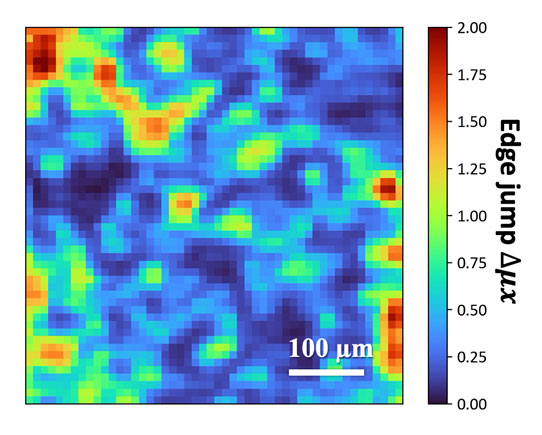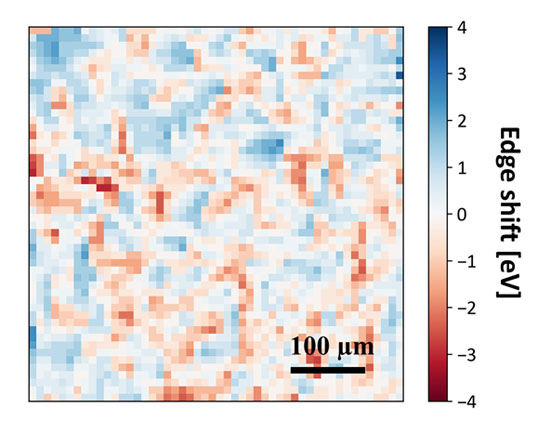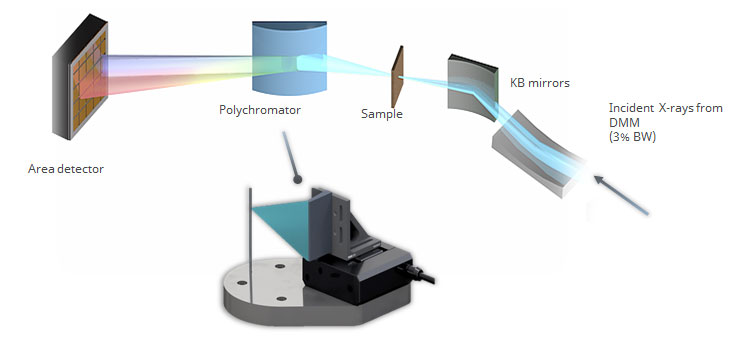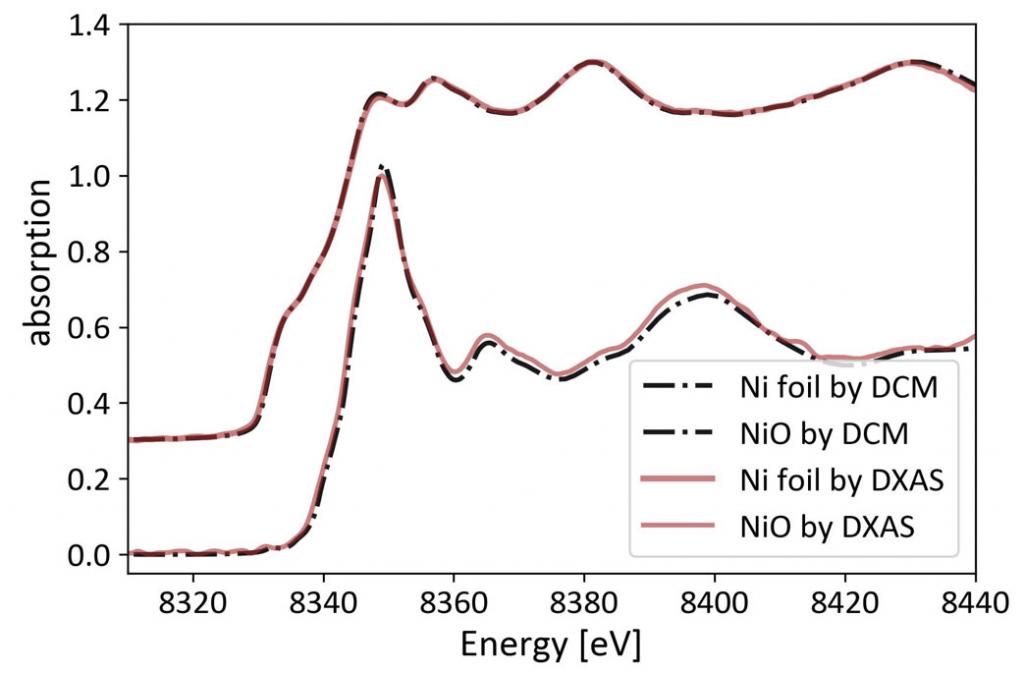| |
Dispersive XANES | |
The new monochromators at 25-ID allow for switching optics to sets of multilayers, which provide a polychromatic beam with a 3% bandwidth, increasing the X-ray flux by 10 to 100 times that of the Si(111) monochromator. |
|
| Below are the spatial maps of absorption and edge-shift derived from spatially resolved Dispersive XANES on a MnxNiyOz laminate. | |
 Variation in concentration through edge step analysis |  Variation in oxidation state through edge position analysis |



